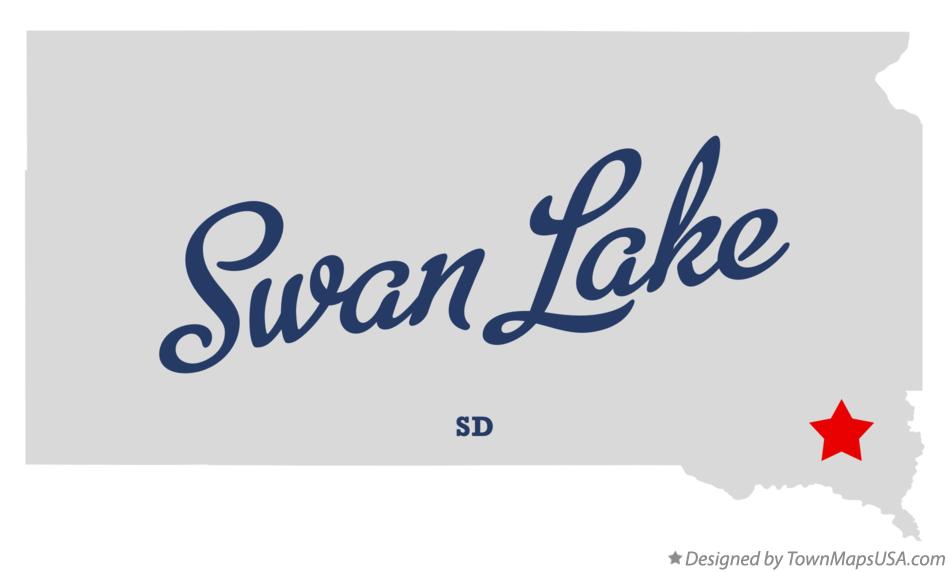Argus leader obits – Argus Leader obituaries offer a poignant glimpse into the lives lived and legacies left within the Sioux Falls community and beyond. These notices, more than simple announcements of death, serve as vital historical records, preserving personal stories and community contributions for generations to come. The Argus Leader’s obituary section reflects not only the passing of individuals but also the evolving narrative of South Dakota itself.
From the carefully chosen words and phrasing to the accompanying photographs, each obituary tells a unique story, reflecting the personality and achievements of the deceased. This analysis explores the structure, style, and impact of these important community records, examining their role in preserving local history and the lasting connections they forge between the living and the departed. We delve into the evolution of obituary writing, comparing styles across decades and highlighting notable figures whose stories have been immortalized within the Argus Leader’s pages.
Understanding Argus Leader Obituaries
Argus Leader obituaries provide a valuable record of the lives lived within the South Dakota community. They serve as lasting tributes, offering details about the deceased and their impact on family, friends, and the wider community. This section explores the structure, content, and stylistic choices within these important announcements.
Typical Structure and Content of Argus Leader Obituaries
A typical Argus Leader obituary usually begins with the name of the deceased, followed by their date of birth and death. Key relationships are detailed, including spouses, children, parents, and siblings. The obituary often includes information about the deceased’s life, such as their profession, hobbies, memberships in organizations, and significant accomplishments. Dates of important life events, such as marriage, military service, or graduation, are frequently included.
A final paragraph often mentions funeral arrangements or memorial services.
Comparison with Other South Dakota Newspapers
While the general structure of obituaries remains consistent across South Dakota newspapers, variations exist in length, style, and inclusion of specific details. Some smaller newspapers may feature shorter, more concise obituaries, while the Argus Leader, as a larger publication, often allows for more detailed and extensive life stories. The tone and focus might also differ slightly, reflecting the editorial style and readership of each publication.
For instance, a rural newspaper might emphasize agricultural contributions or community involvement more prominently than the Argus Leader, which may have a broader focus.
Examples of Different Obituary Styles
Source: dailyspin.id
The Argus Leader showcases a range of obituary styles. Some are formal and factual, focusing on key biographical details. Others adopt a more personal and narrative approach, sharing anecdotes and highlighting the deceased’s personality and relationships. Some obituaries may emphasize achievements in their professional life, while others may focus on personal qualities and contributions to family and community.
The length and depth of detail can vary greatly depending on the life and wishes of the deceased and their family.
Analyzing Obituary Language and Tone
The language and tone used in Argus Leader obituaries reflect the unique life and personality of the deceased. Careful word choice conveys emotions and provides insight into the individual’s character and legacy.
Common Phrases and Stylistic Choices
Common phrases include expressions of love, admiration, and respect. Words like “loving,” “devoted,” “cherished,” and “kind” frequently appear, reflecting positive attributes. Stylistic choices may include the use of evocative imagery or anecdotes to paint a vivid picture of the deceased’s life.
Tone Reflecting Life and Personality

Source: townmapsusa.com
The tone can range from formal and somber to warm and celebratory. A life filled with adventure might be reflected in a more vibrant and engaging obituary, while a life marked by quiet service might be depicted with a more understated and reflective tone. The language used directly mirrors the essence of the person being remembered.
Euphemisms and Subtle Language Techniques
Euphemisms are often used to soften the impact of death. Phrases like “passed away” or “went to be with the Lord” are common substitutes for “died.” These choices reflect cultural and religious sensitivities. Subtle language techniques, such as carefully chosen adjectives and evocative descriptions, are used to create a particular emotional effect.
Examples of Effective Emotional Conveyance

Source: gannett-cdn.com
An obituary that effectively conveys emotion might include specific anecdotes illustrating the deceased’s kindness, humor, or strength of character. It may quote loved ones, sharing their memories and feelings about the deceased. The use of imagery and sensory details can also evoke strong emotional responses.
The Role of Obituaries in Community Remembrance
Argus Leader obituaries play a crucial role in preserving the collective memory of the Sioux Falls community and surrounding areas. They provide a lasting record of individuals’ lives and contributions, offering a sense of continuity and connection across generations.
Contribution to Collective Memory
Obituaries contribute to the collective memory by documenting the lives of individuals who shaped the community. They highlight achievements, legacies, and the impact individuals had on their families, friends, and the broader community. Reading obituaries provides a glimpse into the past and helps us understand the community’s history and evolution.
Impact on Grieving Families and Friends
For grieving families and friends, obituaries provide an opportunity to publicly honor and celebrate the life of their loved one. The act of writing and publishing an obituary can be a cathartic process, helping with the grieving process. The obituary becomes a lasting tribute, allowing others to share in the remembrance and offer condolences.
Role in Preserving Local History and Genealogy
Obituaries are invaluable resources for historical research and genealogical studies. They offer details about family relationships, occupations, places of residence, and significant life events. These details help researchers piece together family histories and understand the social fabric of past communities.
Hypothetical Table Comparing Obituaries Across Decades
| Decade | Typical Length | Common Themes | Visual Elements |
|---|---|---|---|
| 1950s | Relatively short, focused on facts | Family, occupation, military service | Minimal, possibly a small photo |
| 1980s | Longer, more personal details | Family, career, hobbies, community involvement | Larger photo, potentially more details |
| 2010s | Variable length, personal anecdotes | Broad range of interests, digital footprint | Photos, sometimes multimedia elements |
| 2020s | Variable length, emphasis on impact | Family, career, legacy, social impact | Photos, multimedia, online links |
Visual Elements in Argus Leader Obituaries: Argus Leader Obits
Photographs and other visual elements significantly enhance the emotional impact of Argus Leader obituaries. They provide a visual connection to the deceased, allowing readers to connect with the individual on a more personal level.
Use of Photographs and Visual Elements
Photographs are commonly used, often a portrait of the deceased. Sometimes, additional images are included, depicting the deceased in various life stages or engaging in hobbies. These visual elements personalize the obituary and add depth to the narrative.
Do not overlook explore the latest data about miller funeral home in poughkeepsie ny.
Enhancement of Emotional Impact, Argus leader obits
Visuals enhance the emotional impact by providing a tangible representation of the deceased. A smiling photo can convey a sense of joy and warmth, while a more formal portrait might reflect a sense of dignity and respect. Images help readers connect with the individual and feel a stronger sense of empathy.
Hypothetical Obituary Layout
| Section | Placement | Description |
|---|---|---|
| Main Photo | Top Center | Large, high-quality portrait of the deceased. |
| Name & Dates | Below Photo | Clearly displayed, bold font. |
| Biographical Details | Left Column | Paragraphs detailing life events and accomplishments. |
| Family Information | Right Column | List of surviving family members. |
| Additional Photo (optional) | Bottom | Smaller image reflecting a significant life event. |
Examples of Effective Visual Storytelling
A collection of photos showing the deceased at different ages can illustrate their life journey. A photo of the deceased participating in a beloved hobby can highlight their passions. Using images thoughtfully enhances the storytelling aspect of the obituary.
Exploring Notable Obituaries from the Argus Leader
The Argus Leader has published obituaries of numerous notable individuals who significantly impacted the Sioux Falls community and beyond. These obituaries offer valuable insights into their lives, achievements, and legacies.
Notable Obituaries and Their Significance
Identifying specific notable obituaries requires access to the Argus Leader archives, but examples might include prominent business leaders, philanthropists, influential politicians, or individuals known for their contributions to the arts or community service. These obituaries often detail their major accomplishments and the impact they had on the community.
Comparison of Obituaries from Different Backgrounds
Comparing obituaries from individuals with diverse backgrounds reveals the rich tapestry of the community. The obituaries of farmers, teachers, doctors, artists, and business owners would highlight the varied contributions that shape a thriving community.
List of Prominent Figures
- [Name]: [Brief description of their life and contributions].
- [Name]: [Brief description of their life and contributions].
- [Name]: [Brief description of their life and contributions].
Impact of Individuals on the Community
The impact of these individuals is often reflected in the length and detail of their obituaries, as well as the outpouring of tributes from family, friends, and the community at large. Their contributions may range from economic development to social progress, artistic achievements, or charitable works.
The Digital Presence of Argus Leader Obituaries
The Argus Leader’s online presence makes obituaries readily accessible to a wider audience, expanding their reach beyond the print edition.
Online Presentation of Obituaries
Argus Leader obituaries are typically presented online with similar content to the print version, often with added features such as photo galleries, online guest books, and the ability to share the obituary on social media. Searchable databases allow for easy retrieval of past obituaries.
Accessibility and Searchability
The online platform significantly improves accessibility, allowing people from anywhere to view the obituaries. Searchable databases allow users to find obituaries by name, date, or other criteria. This improves the ease of accessing information.
Comparison of Online and Print Versions
The online version offers advantages in terms of accessibility, searchability, and multimedia capabilities. The print version maintains a tangible and traditional format for those who prefer it. Both formats serve the purpose of memorializing individuals and preserving community history.
Effective Search Strategies
To effectively search for specific obituaries online, use the Argus Leader’s website search function, specifying the deceased’s name and relevant dates if known. Using s related to their profession or community involvement can also refine search results.
Closing Notes
The Argus Leader obituaries stand as a testament to the rich tapestry of life in South Dakota. They are more than just announcements; they are a living archive, preserving memories, honoring achievements, and connecting generations. By examining the language, visual elements, and the overall presentation of these obituaries, we gain a deeper appreciation for their significance in commemorating individuals and shaping the collective memory of a community.


